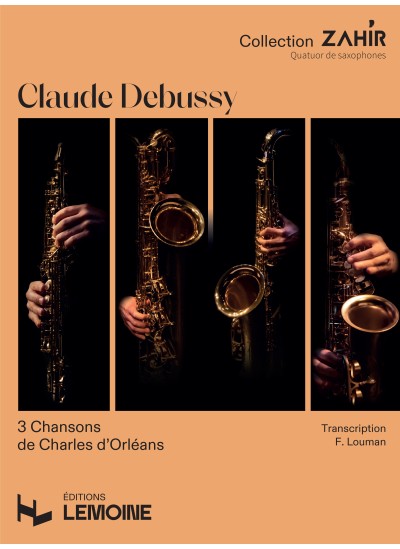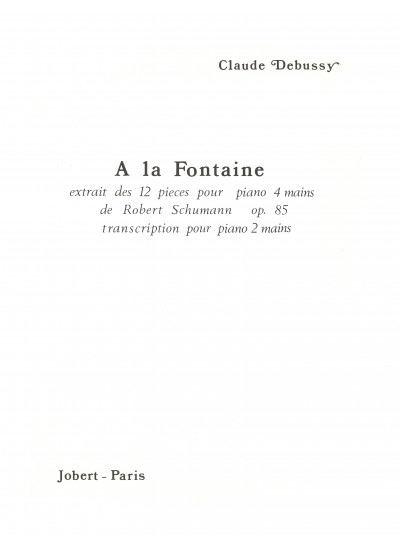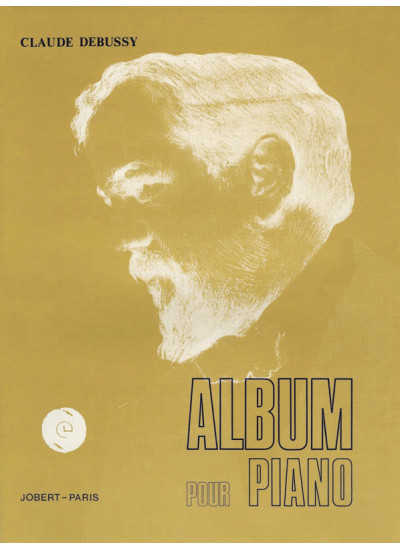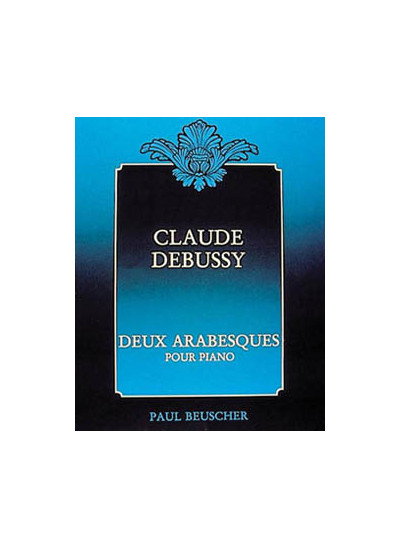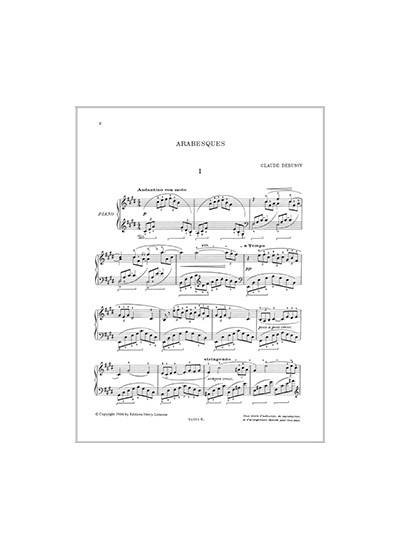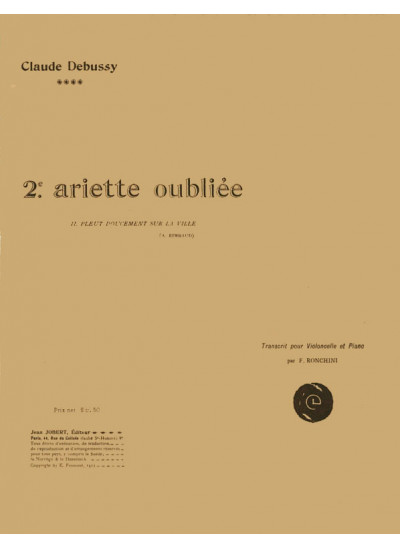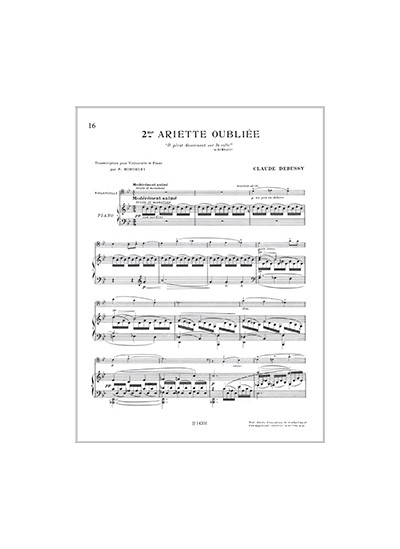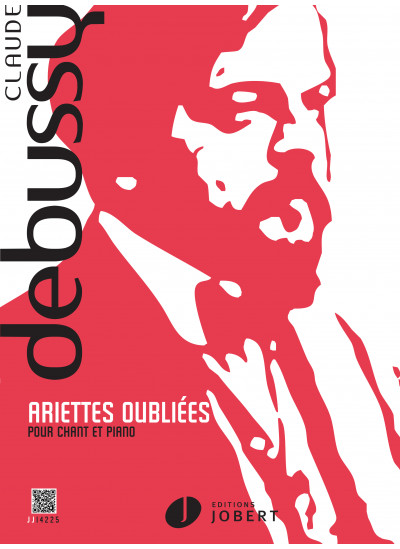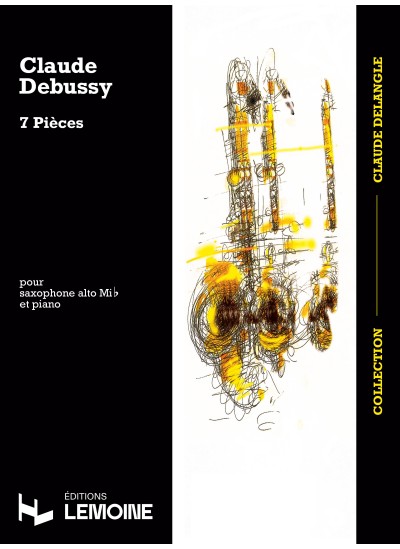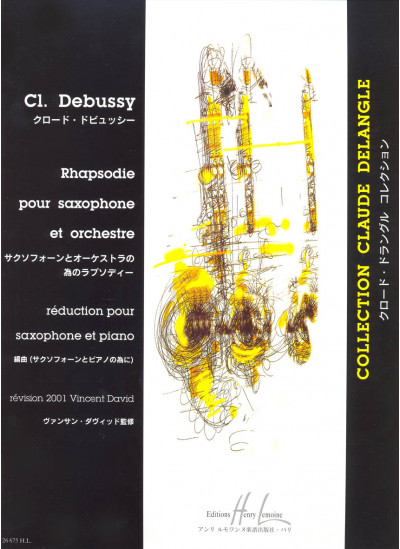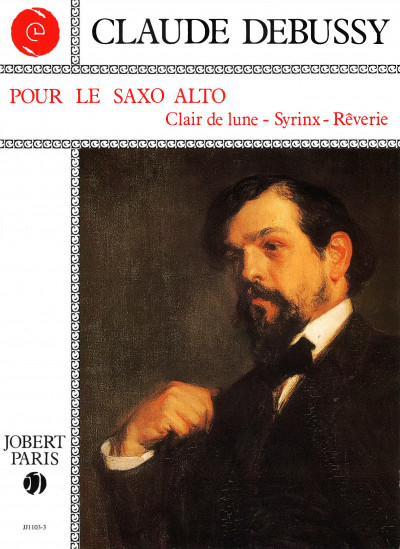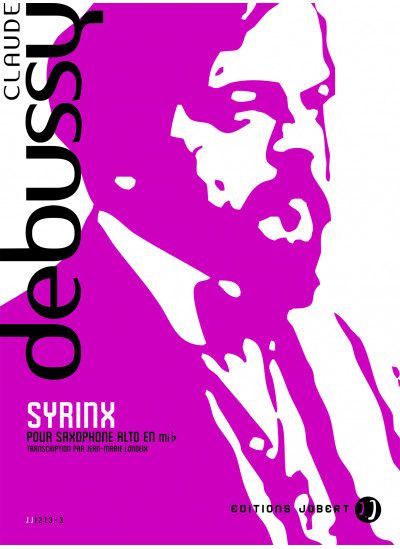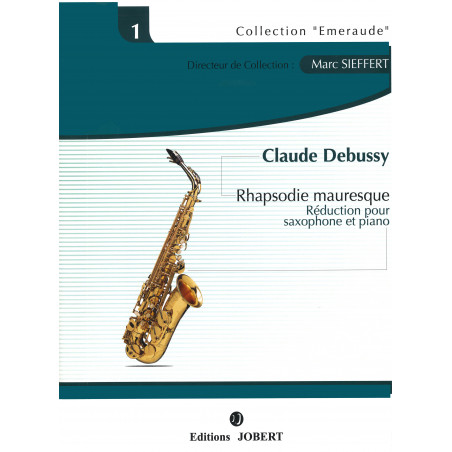
Claude Debussy's Moorish Rhapsody is one of those works more known for what has been said about it than for the music itself. The first biography of the composer by Leon Valla, "Claude Debussy and his Times" retraces the origins of the piece. Apparently, the little he writes about it were the basis for later studies. While numerous studies of Debussy and his music detail biographical facets, differing esthetic points and analyses of works, none of them uncover new elements about the Moorish Rhapsody. Vladimir Jankelevitch (Debussy and the Mystery of the Moment), in his analyses, is the only one who lets us get a glimpse of the diverse "climates" which are distinctly Debussy's, without prejudice.
The ridiculous connotations of the composer's difficulties in realizing Eliza Hall's commission - she was an amateur saxophonist and patron of the arts whose doctor had suggested learning the saxophone to improve her poor hearing - indeed harmed the work's reputation and helped keep it out of circulation.
Nonetheless, after carefully examining the manuscript delivered to the president of the Boston Orchestral Club, it seemed advisable to orchestrate the work keeping strictly to the spirit of the original.
The present edition was made using the Claude Debussy manuscript at the New England Conservatory in Boston, Massachusetts. The following title page in the composer's handwriting, reads as follows:
Sketch for a "Moorish Rhapsody"
for Orchestra and Solo Saxophone
respectfully dedicated to Madame Elisa Hall
by Claude Debussy
1903 - 1908
The 14 pages of music which follow are written on 3, 4 or 5 staves as needed. Only one re-exposition with its modulation bridge (measures 312 to 334) has not been harmonized. Some indications of orchestration are present (instruments mentioned), orchestral texture details are rare or nonexistent. Separation between the saxophone and orchestra is clearly defined up until measure 85. Performance details are totally lacking - tempo indications are reduced to a strict minimum. Melodic line articulation is generally well marked by phrase and not as string bowings.
The term "sketch" is entirely justified. Still, Debussy's distinctly subtle art is apparent from the very first bars. Form is fully defined, harmonies are clear, melodic lines soar, and development respects an exemplary strict minimum of means.
It is unlikely that financial gain could have been the composer's sole incentive to write this piece using the saxophone. While at first he just took the plunge, little by little, very real concerns of the moment came to the fore. More than one passage suggest real esthetic research which no technique could yet satisfy. While the saxophone entrance accompanied by the orchestra after a short cadenza shows signs of the influence of Prelude to the Afternoon of a Faun with its seventh and ninth chords, many passages suggest concerns to be found in contemporary and later works.
Apparently, a fine instrumentalist was the element which was most lacking. And in 1907, he found one, P. Mimart, and wrote his First Rhapsody for Clarinet without hesitating to change passages to better suit that instrument. He admitted to Pierre Louys, not without a certain sense of humour, that "the saxophone is an animal with a reed whose habits I don't really know. Does it like the sweet romanticism of clarinets or the rather vulgar irony of the sarrusophone (or contrbassoon)? I've had it murmur melancholy phrases underneath the drums." Elisa Hall's arrival in Paris did not help things along. And he was even more discouraged after hearing her play for the first time in 1904 (Vincent d'Indy's Choral Varié). Nonetheless, in spite of these conditions which hardly favored artistic creation, Debussy was able to use the sound of the saxophone at its richest and most authentic, making it indispensable and irreplacable from the very first measures - the only ones where its role was fully defined. Was it perhaps Debussy‘s remembering this "new voice" from his youth? He had heard it in Georges Bizet's L'Arlésienne, and his professor from the conservatory, Ernest Guiraud, to whom he was very close, had helped make it known by working out the Second Suite in 1879 from incidental music for the theater. Guiraud went so far as to take the initiative to add a second voice in the menuet for the saxophone. It should be noted that Debussy joined his class in December 1880.
For Debussy, the orchestration phase is a compositional feat in itself. It is not simply a process for dressing up different themes. Working out sound colors and dynamic effects can indeed become a real pretext for change giving rise to new structural elements. This work would never have been given to a separate person for orchestration had Debussy been able to complete the work himself. But it is plausible to imagine a concert version as a "state", such as an artist's proof of a print. Indeed Debussy accepted the principle in 1910 when Henri Busser orchestrated (or rather re-orchestrated) Printemps' sent from Rome. The original orchestration had burned in 1887, and there was only a 4 hands piano reduction. Although it was originally composed for orchestra and choir, Busser made a version for orchestra alone, integrating the piano reduction version like the last traces of a forgotten work.
The main difficulty with such work is to find a healthy balance between loyalty to the text and a certain sense of liberty without resorting to dubious speculation. In this way, any differences that one may find are motivated by careful reading and scupulous analysis of the original.
Numerous tempo indications have been added, but only to facilitate performance. However, the Allegretto Scherzando in measure 85 has been moved to measure 114. It has been replaced by un peu animé, scherzando, and then un peu plus allant (measure 101) and en serrant (measure 112). This initiative has been taken to keep fonnal balance - the second portion of the work, in A major, indeed begins in measure 114, with the preceding passage serving as a transition between the two parts. The Piu Mosso (measure 146) underscores the dramatic character of the central section. Rupture of formal symmetry is prepared by parallel writing in all voices for 4 measure (in contrast to the exposition, measure 154), which allows for the havanaise rhythm to evolve independently (measures 346 to 353). The abruptness and frequency of dynamics indicated by Debussy, as well as harmonic color, impose a slowing down of the tempo at this spot. Likewise, for measure 366 where one finds the same rhythmic-melodic cell mixed with chromaticism.
Unlike the Rhapsody for Clarinet (even though it too is labelled "for Orchestra and Solo Clarinet" in its symphonic version), the Moorish Rhapsody was conceived with orchestra and not with piano accompaniment. This partially explains the imprecise distribution between saxophone and orchestra. As he confided to André Messager, "...and here I am looking desperately for the most uncommon blends that will best bring out this water instrument" Debussy aspired to looking for new colors and sound combinations. And he was hindered by the technical limitations of his chosen soloist as well as a lack of information concerning technical possibilities. This fact is clearly evident in measure 366, where, in the margin, we see S. trill? (saxophone trill?). The composer did not dare write it in. I have allowed myself to overcome this shortcoming by giving it to the saxophone to play above a C# pedal. Consequently, it seemed musically unimagineable to me that the saxophone not participate in the progression over the next four measures (measures 370 to 374). I thus had to write an instrumental passage that is merely a dynamic effect, a sort of commentary on the melodic and harmonic content played by the orchestra. There is another liberty which I left optional in the orchestral version. In measure 128 of the manuscript, the flute plays the melody, but wouldn't it have been given to the saxophone if Madame Elisa Hall had been more of a virtuoso? No one will ever know. However, the harmonic setting seems more logical if this motif is brought down an octave to connect in unsion with the link in measure 136.
As it suggest Moorish Spain, the Rhapsody obviously brings to mind Iberia, the second work in Images pour Orchestra. The manner of using sounds that mix and separate, and connecting the two movements without a pause prefigures certain aspects of the Diptych Les Parfums dans la Nuit - Le matin d'un jour de fête. While it does not have the unity of Prélude l'Après-Midi d'un Faune, nor the complexity of Jeux, Moorish Rhapsody, does indeed have enough attractive points and originality to give us a very clear idea of Claude Debussy's genius.
Marc Sieffert (Sept. 2000)


